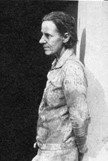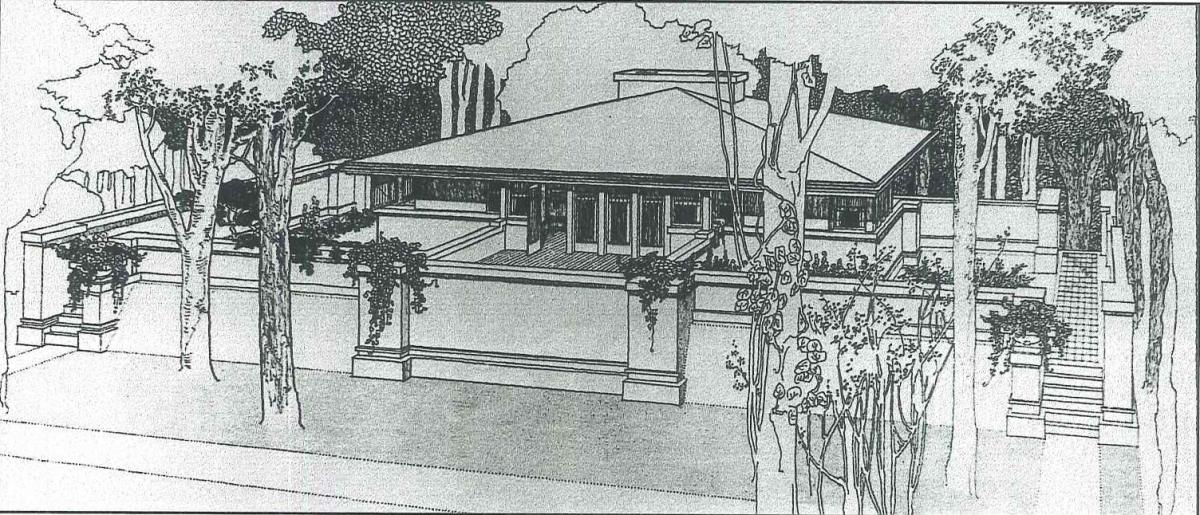
Marion Mahony (pronounced MAH-nee), who was born in Chicago and grew up in Winnetka, was Frank Lloyd Wright’s first employee, and worked for Wright in Oak Park and elsewhere for 14 years.
More often known by her married name and her work with her husband Walter Burley Griffin, Mahony was the second woman to gain a degree in architecture from MIT. When in 1898 she passed the Illinois State licensure exam, she was probably the first woman in the U.S. to be licensed as an architect.[i]
Mahony was overshadowed by Wright and especially by her own self-effacement and devotion to the work of her husband. Now many attribute much of the graphic style of Wright to Mahony, where she was Wright’s chief draftsman (person?). Historians credit Mahony with at least half the drawings in Wright’s portfolio that has been called one of the most influential architectural treasures of the 20th century.[ii] Wright never acknowledged her contribution to the work, published in Germany in 1910.

Late in life Mahony wrote a memoir, The Magic of America. In it she elaborates on her philosophy of design with nature: “Nature is so full of magic that one wonders how men can be so hum-drum,” and “The necessity of preserving the life of the Earth is a prime duty in every field of life, in every occupation; and taking maximum advantage of its gifts is the task of the designer.”
While living and working in the Chicago area, Marion and Walter took many canoe trips on the Chicago, Calumet and Des Plaines Rivers. Their first, recounted in detail in her memoir, took them up the South Branch of the Chicago River in 1911, before the Sanitary and Ship Canal was built. They spent a stormy night out and the next day portaged to the Des Plaines and paddled upstream to leave the canoe at a friendly stranger’s house.
While Wright’s designs may have mirrored – or copied – Mahony’s affinity for nature, she was clear about her opinion of him in her memoir: “It is a curious thing how unfruitful Wright's work has been apparently because of the poison of his spirit of personality and possession which kills the spiritual things.” She praised Louis Sullivan for “the freeing of the profession from the apron strings of stylistic architecture,” but decried the “deadly set-back” of the Columbian Exhibition and the “superficial beauty of that wanton thing.”
Marion created 14 large presentation drawings that were instrumental in she and Griffin winning a contest for the creation of the new Australian capitol Canberra, and they moved there in 1914. After Walter died in 1937 while working in India, Marion returned to Chicago, but “did virtually nothing to enhance her reputation.”[iii]
Copies of Marion’s massive memoir were left with the New York Historical Society and the Art Institute of Chicago, where it is now on line: http://archive.artic.edu/magicofamerica/moa.html
Click here to find out more about Walter Burley Griffin
Submitted by John Elliott, August 2018